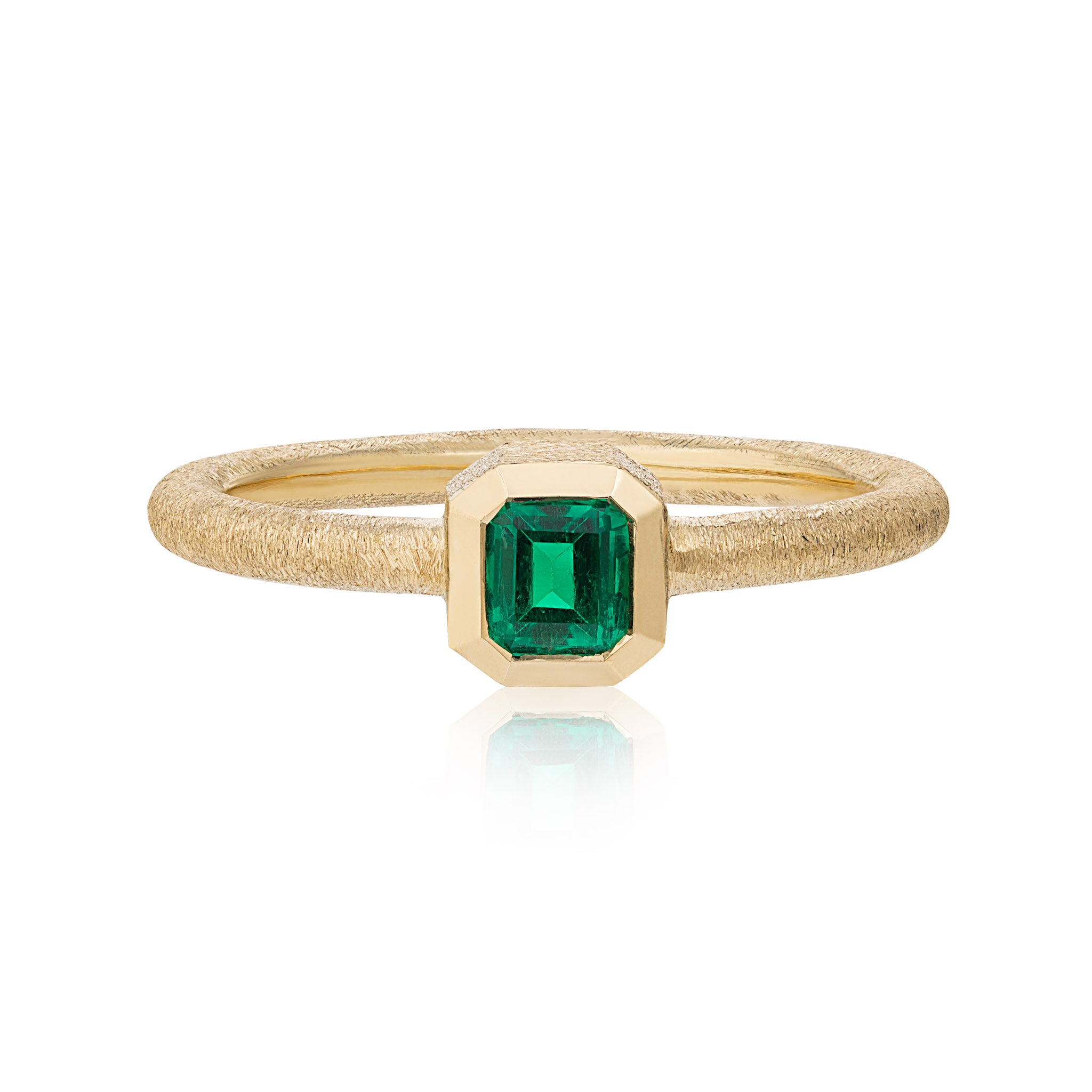If you cast your eye upon a rough stone dug up from the dirt, very dark, cloudy, and nothing extraordinary, you wouldn’t bat an eye at the secrets that it hides beneath. Pass this stone onto a lapidary, and watch it transform into a twinkling, vibrant jewel that anybody could desire with all their heart. Not just anybody can work their magic with these mysterious stones; in fact it takes years of studying and precision practice to perfect the incredible art of gemstone polishing, and yet these talented tradesmen hide behind their products without the greater public knowing just what goes into this work. (Rough and polished ruby, image courtesy of The Gems Fort - Sri Lanka
(Rough and polished ruby, image courtesy of The Gems Fort - Sri Lanka
In the very beginning, rough stones were decorated simply by scratching figures and symbols onto their surfaces, which developed into the art of stone engraving. These engravings were used to make tools, from rollers to press patterns into clay pots and plates. Eventually natural crystal faces and agates were polished to improve lustre and appearance, smoothed down by hard sandpaper into an arched cabochon cut.
It was only until the 15th century that faceted stone became the primary polishing technique (although there are reports of a faceted diamond dating back to 800 A.D!) and grew into a faultless art. Amsterdam and Antwerp are currently the world’s centres for diamond cutting, with Idar-Oberstein/Rhineland-Palatinate the centres of agate and coloured stone manufacturing. (Ancient Roman diamond, image courtesy of Medium
(Ancient Roman diamond, image courtesy of Medium
So, just how do they do it? When it comes to opaque stone, coloured gemstones, and diamonds, all cutting and polishing techniques differentiate. With coloured stones, the rough piece is first cut down with circular saws which contain diamond powder to resize the piece. The desired cut is then performed by shaping the stone using a vertical, roughly grained carborundum wheel. Nowadays this wheel is cooled by environmentally friendly cooling fluids, however they used to be cooled with soapy water, oil, and even petroleum!
Those stones which are opaque, or perhaps have too many inclusions to suit a faceted design, are polished into a cabochon cut – this occurs from the rough stone being cut by a grooved carborundum wheels, shaping them gem into a dome-like arched top and slightly convex bottom.
The stones themselves are held by a ‘dopstick’ which grips onto the gemstone with an adhesive, which is then angled precisely in a board to obtain the correct direction for the gemstone to be cut in and faceted. To cut all sides, the stone must be repeatedly cemented anew, and an amateur cutting machine can be used to obtain precision angles on the stone for whichever direction it is being cut in. The material and speed of the polishing wheel, alongside the type of polishing powder used all depend on which type of stone is being polished, with the final stages of polishing occurring on a rotating wheel, wooden cylinder, or leather strap to remove all traces of scratches. Some stones are also given a melting treatment on their surface which forms a Beilby layer, enhancing the finalised polish. (Ricardo, our resident lapidary based in London DE SAS, Bogota, Colombia - read more about London DE SAS here
(Ricardo, our resident lapidary based in London DE SAS, Bogota, Colombia - read more about London DE SAS here
To work with gemstones like this the gem cutter must first gain his or her gemmology diploma to obtain all knowledge of gemstones, passing multiple examinations and obtaining hours of practice and learning to carefully perfect the trade of polishing gemstones. One must also have an artistic eye and flare for the beautiful. It’s a scientific and creative profession that not just anyone can take on – they’re secret artists hiding behind their work!
Related Articles:
- How to make a Diamond Sparkle
- The Beauty of Gemstone Inclusions
- Pink Diaspore: The Gemstone That's Taking the Jewellery Limelight
BY VICTORIA FLETCHER


 (31)
(31)
